Cupping Marks
The marks that some people get during cupping have a couple of different phases. There are different types of marks, and they come for a few different reasons.
Let's walk through the mechanism of cupping, and what the marks represent.
When the cup is first applied, the original redness that comes to the surface is called hyperemia. It occurs on some people more than others. It has a lot to do with skin type, and the amount of heat in the local area. It also has to do with genetics. Nordic types with paler skin tend to get more hyperemia in treatments. This is a bright redness, and it spreads around the location of the cup. This can be quite intense on some people. Following is an example of of the fresh cupping marks. The redness is created when the blood vessels expand, and a histamine-like substance is released, which is a sign that the immune response has just been stimulated.
In the next 30 seconds to 20 minutes the tissue inside of the cup will begin to change. This may happen quickly, or slowly over the course of several minutes. Again, the degree of variation of cupping marks is related to origin. Those who originate from tropical and sub tropical areas tend to have blood vessels closer to the surface of the skin, thereby having more broken capillaries. There is a tendency to see more red marks that last for a few days in these individuals. If the skin changes very quickly, and looks very irritated, the cups should be removed. This is a sign of overtreatment. Less pressure, and shorter treatment time would be recommended in the future. If the tissue under the cup is getting red, it doesn't necessarily mean that the marks will stay after the treatment. Often if gliding cupping is performed to even out the tissue and recirculate the stale blood vessels, marks can be dispersed and avoided.
When the skin starts to get tiny red spots, or petechiae it is demonstrating a lack of local blood circulation. In this case, the treatment is very helpful for the patient. The tiny broken capillaries will heal, and the dead blood cells will be re-absorbed through the lymphatic system in 1-2 days. If there are severe red marks, this is a sign of underlying severe inflammation and tissue damage. This happens when muscles are over used and there is lots of fibrous scar tissue in the area inhibiting the blood flow in the muscle. These marks may last several days, and can be quite dark in colour. In the picture below, we see cupping marks 24 hours later. The patient is a young man, competitive archer with neck pain on the left side. Note the darkness in the marks on the left shoulder, and the left side of the neck. These marks were gone in 3 days, and the client had a significant decrease in pain.
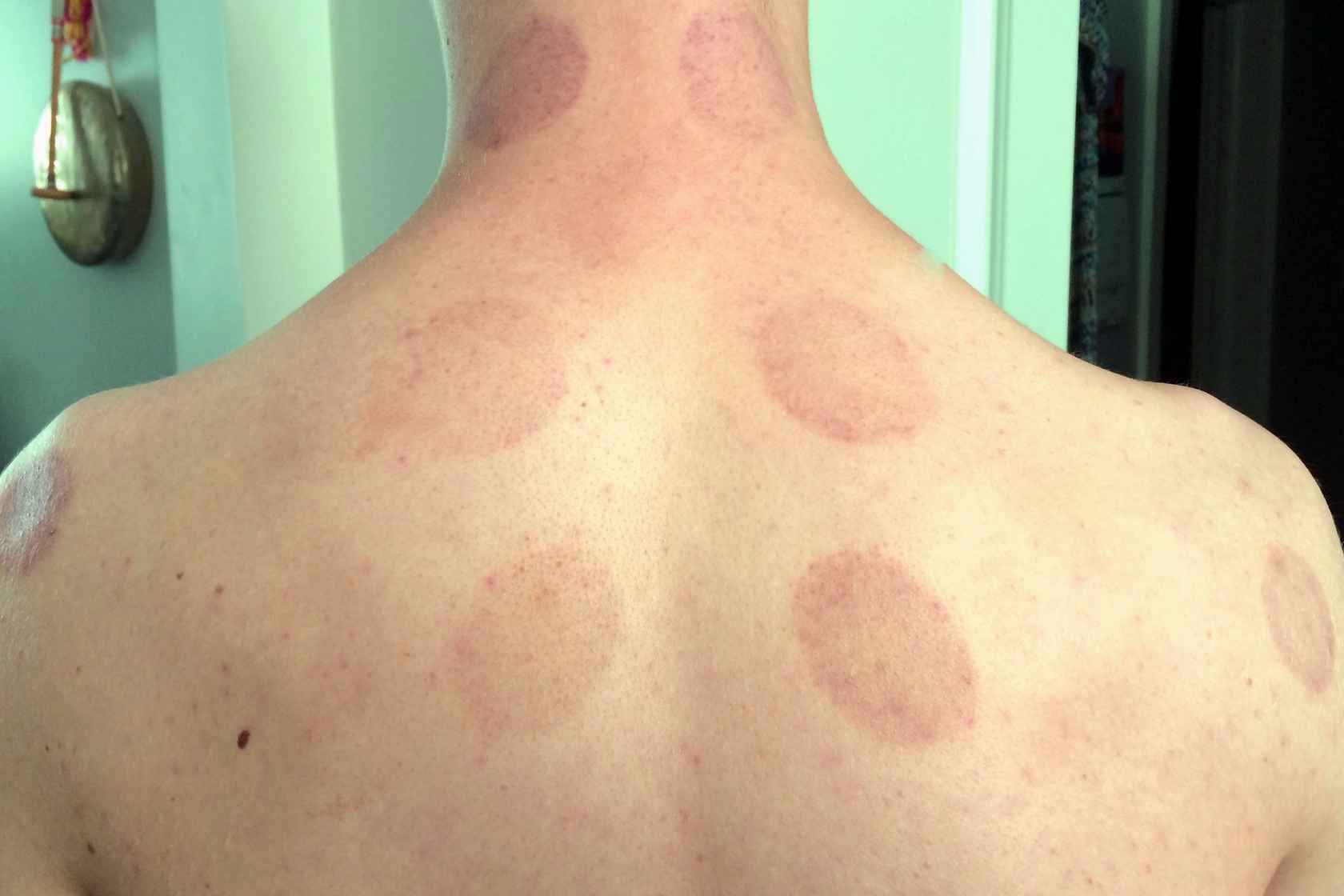
We tend to have an image in our minds of cupping marks. Some people find the marks quite bothersome, some dont think they are doing well unless they are achieving the dark marks. I hope by the end of this course, you understand that there is much more to cupping than creating a big red hickey on the skin!!
This is the cupping mark that we most often identify with:
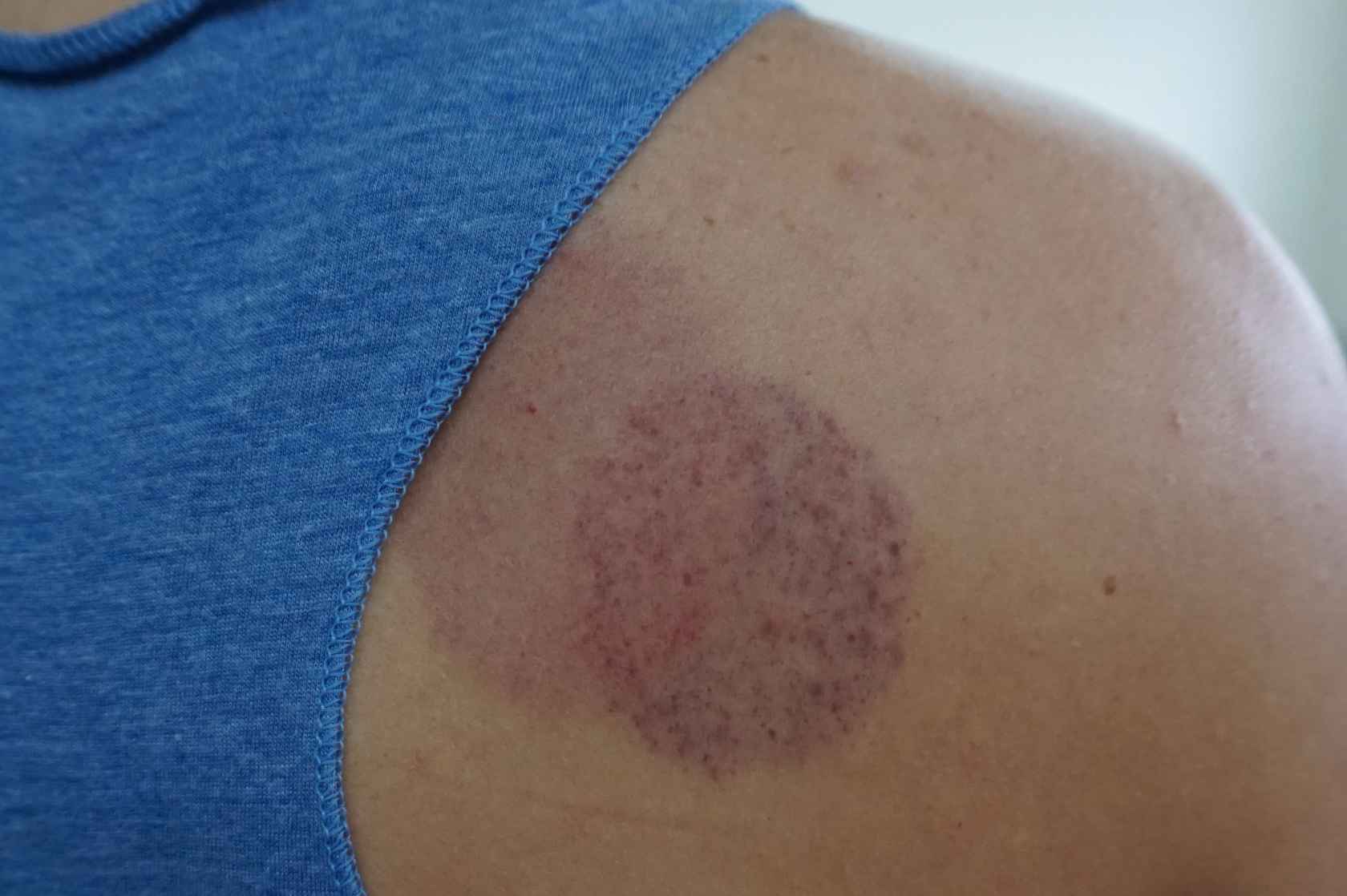
Based on the skin type, and the condition of the body, a variety of reactions can be seen with cupping marks. You should not be alarmed if there are very dark marks on the body, as long as the marks appeared over a period of time (more than 1 minute)
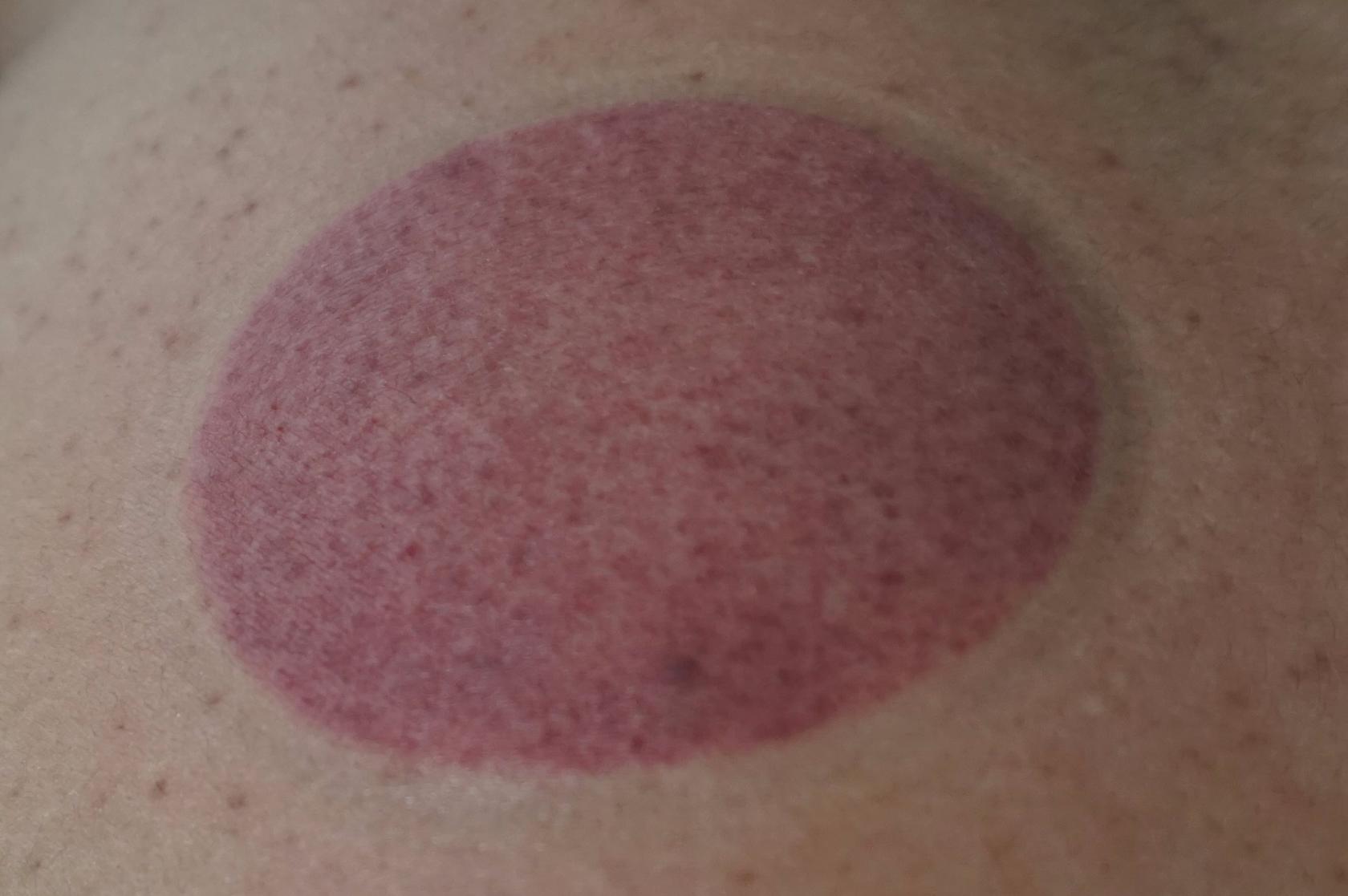
What to look for:
If the skin gets a shiny, tight appearance, your cups may be too tight.
If the cup cannot rotate a little while attached to the tissue, the cup may be too tight.
If the marks turned very red, very quickly your cups may be too tight.
Silicone cups seldom create too much suction. Some say that they cannot get enough suction with silicone cups, but with practice, silicone cups provide an excellent amount of suction. When the pressure inside of the silicone cups exceeds the tension in the body, the cup will begin to collapse. If you are using high quality silicone cups this should provide more than enough pressure.
The cup should never be more than 1/3 full of tissue. Anything more than this is too tight, and could damage the tissues.
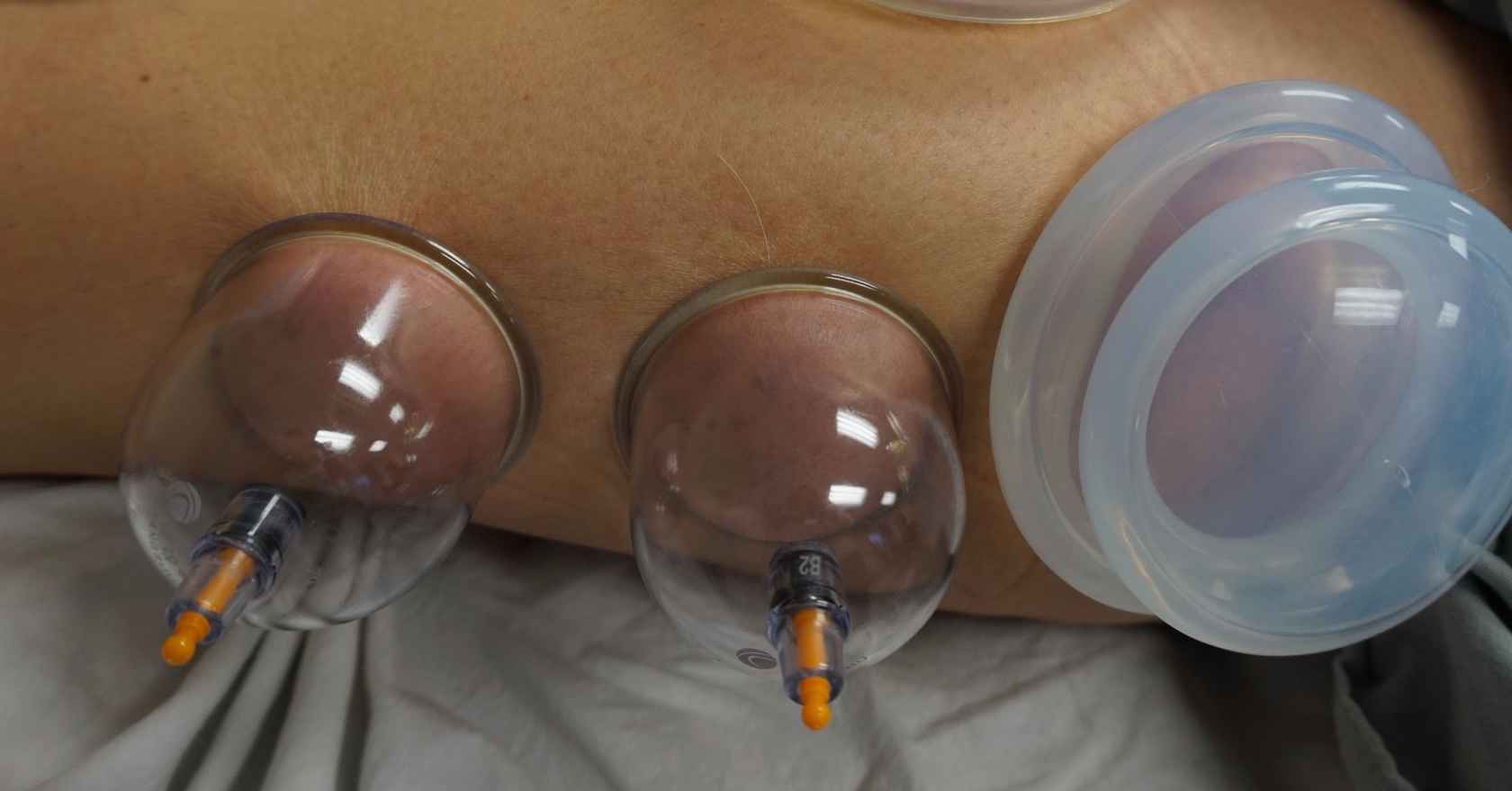
With the plastic cups, the temptation is to keep drawing air out of the cup until it is pinching tight. This is not the goal!! If the body is relaxed, the healing process will occur much more easily. We do not want to injure the body to repair it, we only want to open up the circulation so the body can heal itself.
The cup should never be more than 1/3 full of tissue. Anything more than this is too tight, and could damage the tissues.
The images below are examples of a few kinds of cupping marks. As you can see, they're not all red or purple. The treatment can still be very effective if there are not marks created.

Most often we are using cupping on areas of pain in the body. In many cases, the heat is a kind of acute, or sub-acute injury that could also demonstrate heat, inflammation, and lack of/painful mobility. In these cases, the cups will turn red very quickly because there is heat and inflammation in the area. In cases where there is pain due to very chronic injury leading to weakness and cold (you can feel the skin temperature usually with the back of your hand) The skin may not change colour inside the cup, or it may turn white/purple/blue. In this case, fast cupping, or stationary cupping with less pressure would be indicated. Heat may also be added to increase circulation.

Alternately, you may see a more purple mark showing up on the body, which would indicate stagnation of blood on a deeper level.
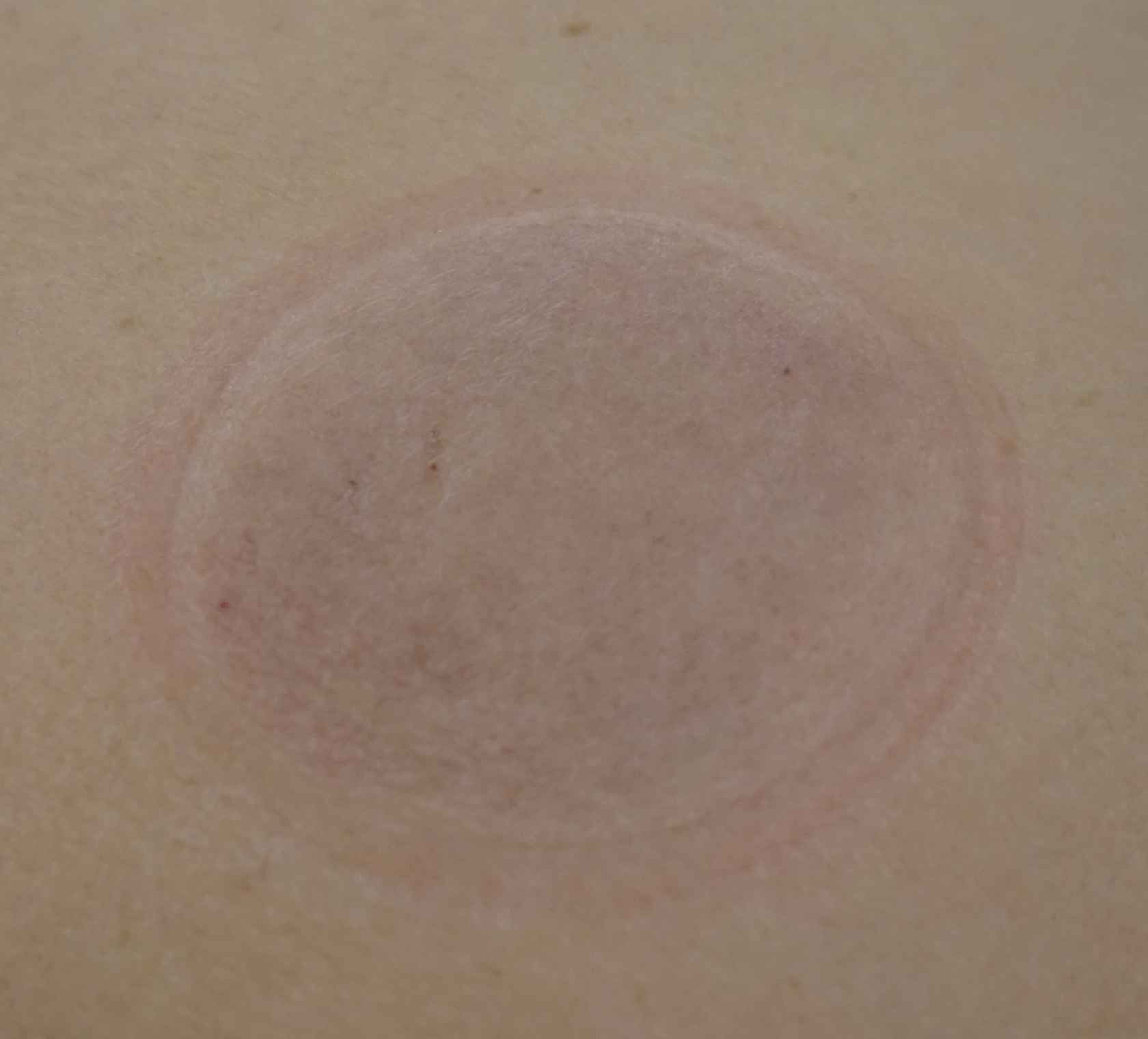
A mark like the one above usually indicates poor blood circulation so can be fairly 'normal' on areas of the body with little bloodflow, or over adipose tissue.
There are many levels of stagnation in the body, from the image above with a pale, purple colour, or a deep stagnation that comes with heat. This is often what we see when treating an athlete, or someone who uses a body part repetitively.
The following is a video of a typical stationary - deep level cupping treatment with plastic cups. Notice that the tissue goes up about 1/3 of the way inside the cup. This client has very loose tissue, so the temptation is to draw a lot of tissue into the cup. The second video will demonstrate the cupping marks created after only about 3 minutes of cupping at this depth.
Check out this histamine response video:










0 comments
Leave a comment
Please log in or register to post a comment